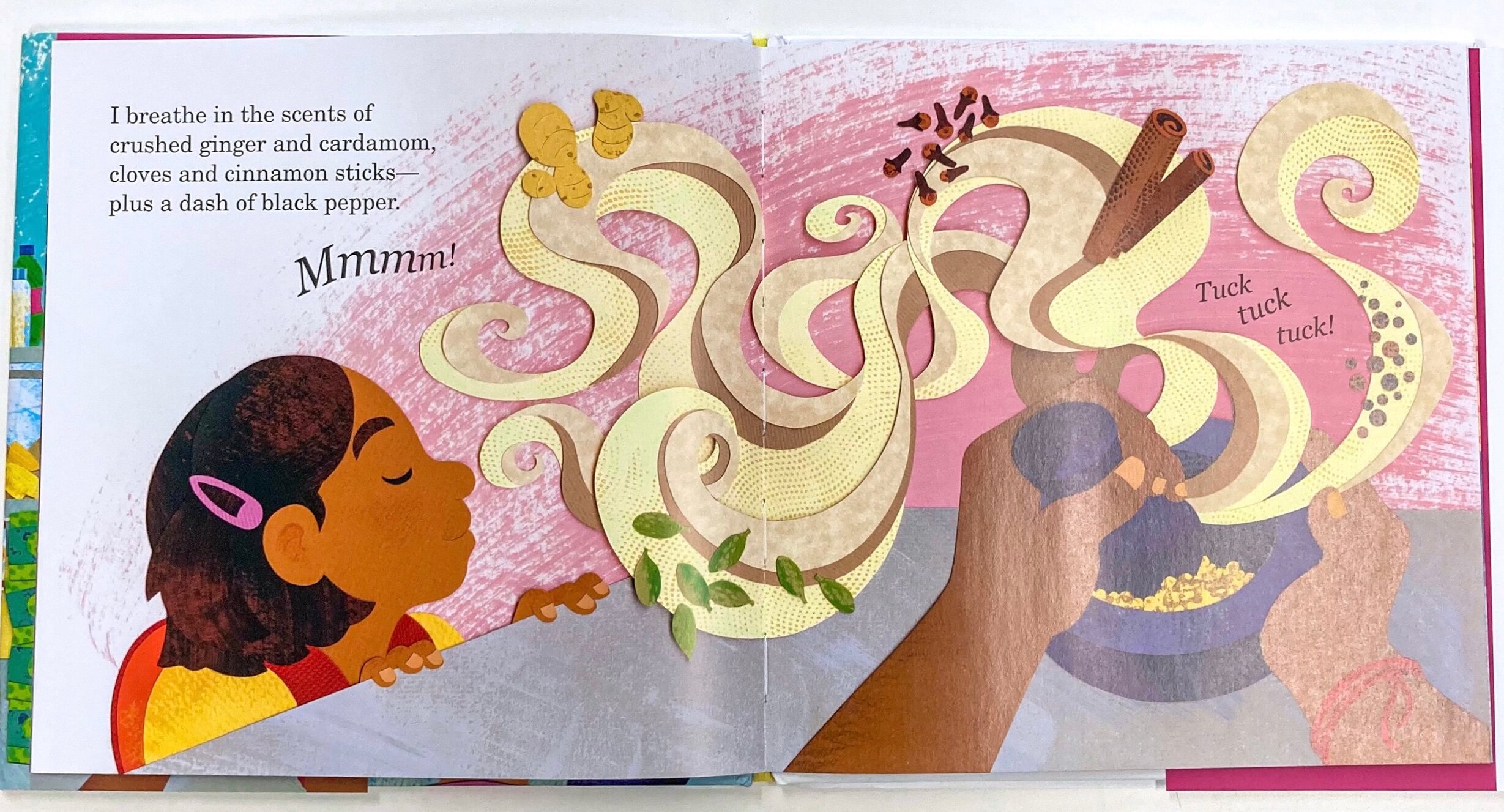Process Talk: Priti Maheshwari on Sensory Memory and POV
This conversation is a follow-up to Priti Maheshwari’s guest post on her new picture book, Chaiwala!
[Uma] Can we talk about this spread in Chaiwala! where the child has her eyes closed and the scents of spices, freshly ground, is wafting across the page and almost out to the reader? It’s a lovely way of evoking a sensory perception that is really beyond the apparent ability of both words and images. How did you arrive at these words, which leave exactly enough room for the art to achieve this swirling interior effect?
Images courtesy of Owlkids
[Priti] Growing up watching my parents make chai, I always noticed how they added each one of these ingredients with care. The right amount of ginger, a few pods of cardamom, a few sticks of cloves and cinnamon and of course a pinch of black pepper. When my parents would pour the chai into teacups, I could smell all of these spices in the air. You could walk into the kitchen and know right away that a pot of fresh chai had just been made. I dug deep to think about that feeling as a child and then the words came out quite easily so that I could take the reader there with me. I knew that the words had to be very precise for this spread as I wanted to leave room for the illustrator to make that final connection with the reader; to draw them in and put themselves in the same spot as the little girl.
[Uma] Yes, it’s the art that makes that connection—such a magical thing in picture books! And how about this one, where the near-rhyme makes us look at the child, but then the illustration draws the eye to all the other things happening around the child and her mother? Can you talk again about how you came to leave room for the illustrator to fill out the setting? Was this scene wordier before? What got cut and when?
[Priti] The illustrations on each page of this book are so well done but this has to be my favourite one. I had the opportunity to collaborate at length with the illustrator. I shared with her pictures of a typical Indian train station where there is always lots happening between the crowds of people running and standing idle, suitcases rolling by, it is almost impossible to find a spot to sit down! So it’s so unexpected to find the mother and daughter finding a moment to enjoy their chai.
When I look back at the original manuscript, I see so many changes. When I first drafted the manuscript, I jumped right in and wrote about the process of how chai was made rather than building up to it. For example:
Tiny tea cups
Steaming with tea
Smells of ginger, cardamom, cloves
Yummy!
After many revisions and working with the editor, this was the result:
“Next station, Jaipur!”.
The train screeches to a halt
for 10 minutes.
Perfect time for chai!
And then that was revised to:
“Next station, Jaipur!”.
The train screeches to a halt.
We have ten minutes.
Perfect time for chai!
The small nuances of punctuation placement and breaking a sentence into two separate thoughts allow the reader to absorb the text and take in the illustrations.
Congratulations, Priti and thank you for this meditation on the interplay of text and image in Chaiwala!


